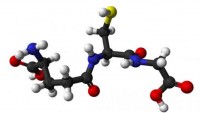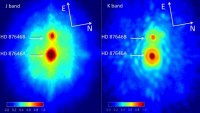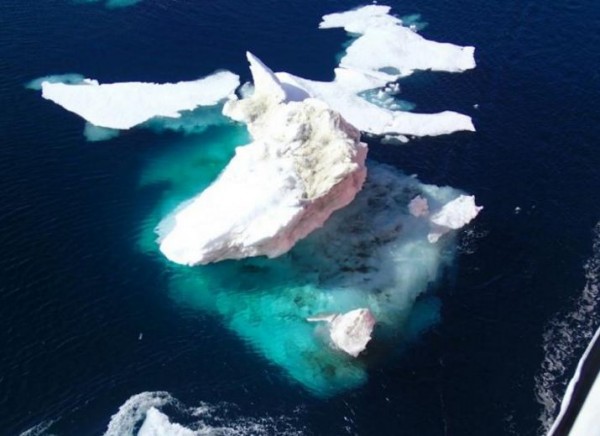Arctic’s Huge Role in Removing Nitrogen Threatened by Human Activity
| Arthur Dominic Villasanta | | Oct 26, 2016 11:13 AM EDT |
(Photo : University of Texas at Austin) In the first study of its kind in the Arctic, scientists found the bacteria that remove nitrogen here are responsible for about five percent of the world's nitrogen removal in oceans
Areas of the Arctic play a larger role than once thought in the global nitrogen cycle, which is the process responsible for keeping a critical element necessary for life flowing between the atmosphere, the land and oceans.
In a new study, marine chemists and biologists from The University of Texas at Austin discovered that seabed microbes remove substantial quantities of nitrogen from the Arctic Ocean. While the Arctic accounts for only a little more than one percent of the world's continental shelves (where most nitrogen is removed), this region accounts for about five percent of the global ocean nitrogen removal.
Like Us on Facebook
Scientists think the oceans maintained a reliable balance between nitrogen sources and nitrogen removal in the past. This global nitrogen budget indicates that overall ocean nitrogen levels are higher now than ever before due to human activity, such as fertilizer run-off and sewage into the oceans.
This perturbation throws the budget out of balance. All living things need nitrogen for survival, but excessive nitrogen can harm marine and terrestrial ecosystems.
For example, excess nitrogen in the ocean can fuel growth of algae blooms, including toxic blooms that are harmful to marine life. Symptoms of nitrogen pollution include "dead zones," fish kills, shellfish poisoning and loss of coastal habitats such as seagrass meadows and coral reefs.
Natural bacteria in the ocean remove some of this extra nitrogen in the ocean by converting it to inert nitrogen gas in a process called "denitrification."
"Microbial nitrogen removal occurs across the globe, and we were interested in how much of an impact it was making in the Arctic," said Amber Hardison, an assistant professor of marine science at The University of Texas at Austin who was an author on the paper.
Hardison and her colleagues collaborated in the first-ever study in the Arctic region to measure several different processes that can remove nitrogen.
The researchers conducted the study in the Chukchi Sea, a part of the Arctic Ocean adjacent to the Pacific Ocean and Alaska. The area is of interest not only to scientists but also to oil industry officials due to the potential for large reserves of oil and gas.
The Obama administration has removed the area of Hanna Shoal in the northeast Chukchi Sea from consideration for future oil and gas leasing, and the new research adds to the environmental case for protecting the region.
"The role of this region is critically important to understand as humans put more nitrogen into the ocean via fertilizers, sewage and other sources," said Hardison.
"The Arctic is also undergoing dramatic changes linked to climate change, including a rapid decline in sea ice. As sea ice shrinks, it disrupts the natural functioning of the ecosystem, including potentially limiting the vital nitrogen removal process."
The scientists also discovered the animals living on and in the seafloor play a significant role in facilitating nitrogen removal. Animals such as worms and clams make tubes and burrows in the seabed, creating a perfect space for bacteria to engage in denitrification.
"This study was a great example of the interplay of biology and chemistry and is the first time it was shown in the Arctic," Hardison said.
She warns, however, that depleted sea ice will alter the system in unknown ways, including the animals living on and in the seafloor and their facilitation of bacterial nitrogen removal.
The finding is reported in a new study of the continental shelf in the Arctic Ocean published Wednesday in the journal Nature Communications.
TagsArctic, nitrogen cycle, University of Texas at Austin, notrigen, algae blooms, dead zones, Amber Hardison
©2015 Chinatopix All rights reserved. Do not reproduce without permission
 Boosting Levels of Antioxidant Glutathione might help Resist Age-related Decline
Boosting Levels of Antioxidant Glutathione might help Resist Age-related Decline Chinese Firm Issues Recall for Webcams and DVRs used as Botnets in Global DDoS Attack
Chinese Firm Issues Recall for Webcams and DVRs used as Botnets in Global DDoS Attack Discovery of First Binary-Binary Questions Accepted Theory of Solar System Formation
Discovery of First Binary-Binary Questions Accepted Theory of Solar System Formation New Study Challenges Theory the Universe is Expanding; Assaults Existence of Dark Energy
New Study Challenges Theory the Universe is Expanding; Assaults Existence of Dark Energy
EDITOR'S PICKS
-

Did the Trump administration just announce plans for a trade war with ‘hostile’ China and Russia?
-

US Senate passes Taiwan travel bill slammed by China
-

As Yan Sihong’s family grieves, here are other Chinese students who went missing abroad. Some have never been found
-

Beijing blasts Western critics who ‘smear China’ with the term sharp power
-

China Envoy Seeks to Defuse Tensions With U.S. as a Trade War Brews
-

Singapore's Deputy PM Provides Bitcoin Vote of Confidence Amid China's Blanket Bans
-

China warns investors over risks in overseas virtual currency trading
-

Chinese government most trustworthy: survey
-

Kashima Antlers On Course For Back-To-Back Titles
MOST POPULAR
LATEST NEWS
Zhou Yongkang: China's Former Security Chief Sentenced to Life in Prison

China's former Chief of the Ministry of Public Security, Zhou Yongkang, has been given a life sentence after he was found guilty of abusing his office, bribery and deliberately ... Full Article
TRENDING STORY

China Pork Prices Expected to Stabilize As The Supplies Recover

Elephone P9000 Smartphone is now on Sale on Amazon India

There's a Big Chance Cliffhangers Won't Still Be Resolved When Grey's Anatomy Season 13 Returns

Supreme Court Ruled on Samsung vs Apple Dispute for Patent Infringement

Microsoft Surface Pro 5 Rumors and Release Date: What is the Latest?










